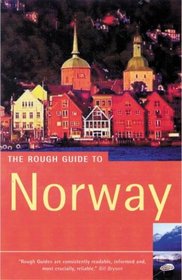Search -
The Rough Guide to Norway 3 (Rough Guide Travel Guides)
The Rough Guide to Norway 3 - Rough Guide Travel Guides
Author:
INTRODUCTION In a tamed and heavily populated continent, Norway remains a wilderness outpost. Everything here is on a grand scale, with some of Europe's finest and wildest land- and seascapes. From the Skagerrak - the choppy channel that separates the country from Denmark - Norway stretches north in a long, slender band along the Atlantic seabo... more »
Author:
INTRODUCTION In a tamed and heavily populated continent, Norway remains a wilderness outpost. Everything here is on a grand scale, with some of Europe's finest and wildest land- and seascapes. From the Skagerrak - the choppy channel that separates the country from Denmark - Norway stretches north in a long, slender band along the Atlantic seabo... more »
ISBN-13: 9781843530541
ISBN-10: 1843530546
Publication Date: 6/23/2003
Pages: 448
Edition: 3rd
Rating: 1
ISBN-10: 1843530546
Publication Date: 6/23/2003
Pages: 448
Edition: 3rd
Rating: 1
4 stars, based on 1 rating
Genres:
- Travel >> Europe >> General
- Travel >> Europe >> Norway >> General
- Travel >> Reference >> Guidebooks
- Travel >> Travel Writing
- Travel >> Guidebook Series >> Rough Guide




